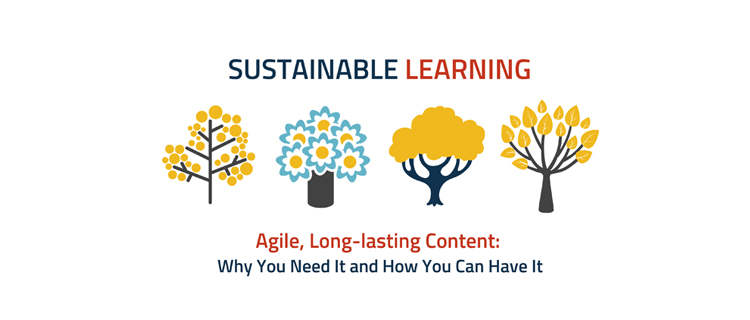Interactive, intuitive, engaging, those are the adjectives used to describe eLearning. With the recent inclusion of game-based learning, serious games, and gamification to the mix, the fun-factor has been added too. And the benefits are not just in terms of learner participation and increased retention, but in terms of better returns too. Gamification in eLearning is fast emerging as an effective technique to engage learners.
What is gamification?
Gamification is the application of game-play elements, as well as game mechanics to different types of activities; that augments the level of engagement for the recipients of those activities. Due to its propensity for bringing about favorable outcomes by boosting the receptivity and relatability, gamification makes for a highly effective integration in typical employee/workforce learning scenarios. This is due to a variety of engaging elements such as:
- Dynamic interactivity
- Leaderboards
- Achievements/rewards
- Level-based challenges
How it works
There exists a pertinent biological–hormonal, to be more specific–factor that drives the effectiveness of gamification in learning. When an individual participates in activities that are mentally (or physically) stimulating, their body releases hormones known as Endorphins. These are responsible for creating an almost euphoric state of excitement, and subsequently boost individual motivation. Gamification, when applied to learning activities, therefore boosts motivation, and creates memorable experiences that make the entire outcome more relatable for learners. In this way, learning not only becomes highly engaging, but also a great deal of fun for recipients (employees).
All said and done however, the integration of Gamification with employee training/learning requires significant investments of time and money, on behalf of organizations. Having a clear picture as to the benefits of Gamification, therefore becomes imperative. Hey are 5 key factors that indicate good ROI for companies that opt for Gamification in eLearning:
- Quantified outcomes
One of the foremost advantages of Gamification is the fact that it yields objective data regarding user performance. The aforementioned elements such as leaderboards, and challenge scoring automatically generate quantified results that allow training administrators to directly gauge training outcome on an individual level. Furthermore, this also becomes an excellent way to gauge the business impact of learning administered, thus establishing long-term ROI for the organization.
- Applied perspective
A direct effect of Gamification in learning, is instant feedback for learners who are engaged in the activity. This is a due to the fact that; just like in actual games; actions have multiple outcomes based on the course they are applied in. Learners therefore become first-hand witnesses to the real-life consequences of different types of actions, in a virtual environment. As a result of this, they get acquainted with the appropriate practical applications of their training, as they receive a more-than-fair idea regarding the correlation between training practices, and real time workplace scenarios.
- Problem-oriented
The user experience of most games revolves around the concept of problem solving; and the derivation of order through the mitigation of chaos. This also holds true for gamified learning courses, that are more focused on different kinds of problems, rather than the course content itself. This is much more useful to employees in the long run, as Gamification equips them to respond effectively in varying workplace scenarios; as opposed to conventional training that incorporates nothing more than a block of content, something that learners are not likely to recall in its entirety.
- Learned sovereignty
Gamification turns learning into an interactive experience, rather than an instructional one. This is because learners are afforded the freedom to gain, and apply their knowledge as per their choice, based on their understanding. The entire concept of learning–within Gamification mechanics– is more subliminal than it is deliberate. This indirectly creates a sense of autonomy in the mind of learners with respect to the training course they are undertaking. As a consequence of this, they will respond well to what they are learning/have learnt and will therefore be able to make meaningful use of it.
- Perfected Micro-learning
Micro-learning is a popular training method, especially for millennials, because of the ‘baby steps’ approach it brings to learning. Micro-learning is all about delivering training in the form of bite-sized nuggets–micro nuggets–that focus on the completion of a series of small objectives, that subsequently go on to resolve a larger issue. This is, in many situations, far more impactful as compared to having learners focus on large (broader) objectives all at once.
The risk when it comes to micro-learning however, is that the entire approach is fragmented, and learners may therefore lose sight of/be unable to perceive the greater underlying objective. Enter Gamification, which has the potential to effectively tie up all the [proverbial] loose fragments through learning principles that are based on game mechanics. For instance: Rewards and Achievements can, as applied concepts, unify important learning modules that would otherwise be less likely to be associated by learners.
From prompt feedback to better environment for re-learning and experimenting, Gamification brings in the added benefit of making learning an enjoyable activity. In addition, competitiveness and the rewards associated to tasks act as constant motivators for learning. And though the initial phases of creating and deploying gamified learning may consume time, effort and money, the returns it brings cannot be overlooked, mostly in an organizational setup where employee performance plays a crucial role in the overall turnover.



